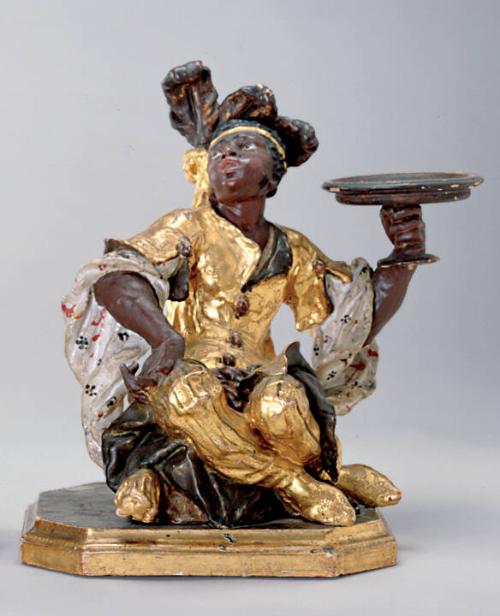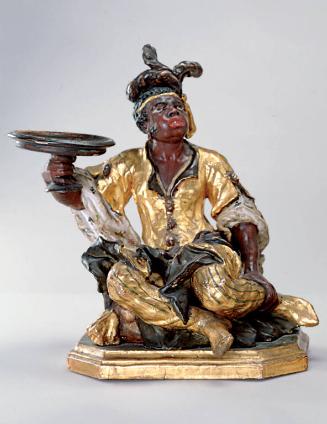Blackamoor
Artistattributed to
Giovanni Giuliani
(Italian, 1633 - 1744)
Datec. 1722-28
CultureItalian
MediumPolychromed and gilded terracotta with wooden base
ClassificationSculpture
ProvenanceHeiligenkreuz Abbey, Heiligenkreuz, Austria; by 1938, Oscar Bondy (1870–1944), Vienna and New York; seized in 1938 by Nazi forces; in 1948, restituted to Mrs. Oscar (Elisabeth) Bondy, New York. (Blumka Gallery, New York); sold to the John and Mable Ringling Museum of Art, Sarasota, Florida, 1949.
Credit LineMuseum purchase, 1949
Object numberSN7271
Exotic subjects fascinated eighteenth-century Venetian artists and patrons. Fancifully dressed slave figures, called Blackamoors, were especially popular in the decorative arts. These two striking figures were probably candle holders. With their full red lips, short broad noses, and tightly curled hair, the sculptures represent eighteenth-century stereotypes of Africans. Although their plumed headbands and elaborate gold costumes are more Turkish-inspired, artists tended to conflate the image of the Moor (a Muslim from Spain or North Africa) with that of the Turk betokening Venice’s long-standing trade connections with the Near East.
On View
Not on viewca. 1510-20
ca. 1490-1500
ca. 1530-40











